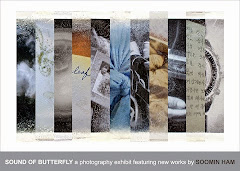Whether you prefer soft strumming or hard-core rock, Clifford Wheeler's latest work at Multiple Exposures Gallery (MEG) is captivating. His images of guitars from one of the largest private collections in the world reveal the sinuous lines and graphic details of instruments that brought us some of our favorite music over the decades.
Below, Clifford shares some thoughts on the inspiration for his show -- Axes Bold As Love -- The Luthier's Art. Please join us for an opening reception on Sunday, January 13th at 2pm at MEG. The show runs through February 10th.
There's just some aspect of the human mind that lends itself to the concept of “collecting." I suspect the first objects to be collected might have been either pebbles or shells. Since these early days of collecting, our tastes have become more sophisticated, more refined. We can now take credit, as a species, for collecting “Beanie Babies," political memorabilia, autographs, match books, Bobble Heads, paperweights, and, of course, rare American Guitars. I happen to know one of these guitar collectors, and as it turns out, his is one of the most respected collections of “Vintage American Guitars” in the whole of the entire world. And did I mention, they are totally cool.
You don't even have to be a musician to appreciate how completely beautiful they are. And then...there's the sound. These days, any time a tune plays itself in your head, there's a good chance that one of these instruments most likely helped create it.
Once in a conversation with Gilvis, whose guitars these are, he made the statement that “Ed Sullivan killed guitar manufacturing in America”! I asked, “You mean the TV guy Ed Sullivan? What's up with that?" He said, “From the moment he introduced the Beatles on American television, the demand for electric guitars increased exponentially.” The subsequent mass-production of these instruments led to their rapid decline. The expression "pre-CBS" refers to guitars made before CBS acquired Fender Guitars, but maybe the “Golden Era” might be better defined simply as pre-Beatles.
“Never Forget”
2 years ago







